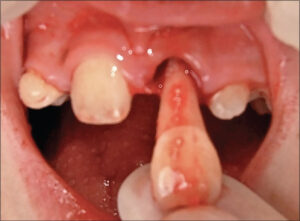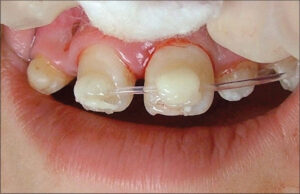Introduction
A knocked-out tooth—medically known as tooth avulsion—is a dental emergency where a tooth is completely dislodged from its socket. This condition is particularly common in children because their bones are softer and more elastic, making them more vulnerable during sports and other physical activities. In this detailed guide, we cover everything from what a knocked out tooth is, common causes and symptoms, preventive measures, immediate steps to take (even when dental care isn’t immediately available), and long-term care for both permanent and milk teeth.
What is a Knocked-Out Tooth?
A knocked-out tooth occurs when an impact forces the entire tooth out of its socket. Often resulting from falls, sports injuries, or accidents, this condition is known in dental terminology as tooth avulsion. Quick and proper action is essential to increase the chances of saving the tooth.
Why Are Children More Prone to Tooth Avulsion?
- Softer, More Elastic Bones: Children’s bones are not as dense as adults, making their dental sockets more susceptible to injury.
- Active Lifestyles: Kids are often involved in sports and vigorous play, which increases the risk of falls and collisions.
- Developing Dentition: With the transition from baby teeth to permanent teeth, the mixed dentition stage can also contribute to accidental tooth avulsion.
Causes of Tooth Avulsion
Tooth avulsion is most commonly caused by:
- Direct Trauma: A strong blow to the mouth during sports or accidents.
- Falls: Especially common in young children who are still mastering balance and coordination.
- Accidents: Including car crashes or physical altercations.
- Underlying Dental Issues: Weakened teeth due to decay or gum disease can also increase vulnerability.
How to Prevent Tooth Avulsion
While accidents are sometimes unavoidable, you can reduce the risk with these preventive measures:
- Use Protective Gear: Always wear mouthguards during sports and high-impact activities.
- Create a Safe Environment: Childproof your home and playground areas to reduce the chance of falls.
- Regular Dental Check-Ups: Maintaining good dental health strengthens your teeth and surrounding structures.
- Educate on Safe Practices: Encourage safe play and sportsmanship among children.
Recognizing the Symptoms and Features
Knowing the signs of a knocked out tooth is vital for quick action:
- Missing Tooth: The most obvious sign is the complete absence of a tooth.
- Bleeding and Swelling: The area around the empty socket may exhibit bleeding and swelling.
- Intense Pain: A sharp pain in the affected area is common.
- Damage to Surrounding Tissues: You might notice lacerations or bruising around the mouth.
Immediate Actions for a Knocked Out Tooth
When faced with a knocked out tooth, every minute counts. Follow these steps carefully:
- Handle the Tooth Correctly:
- Avoid touching the root: Hold the tooth by the crown (the top part) to preserve the delicate fibers.
- Gently rinse with lukewarm water: Do so for about 30 seconds to remove any debris.
- Reposition if Possible:
- For adults: If you have immediate access to help, try placing the tooth back into its socket using the guidance of adjacent teeth. Bite down gently on a clean cloth or gauze to help keep it in place.
- Storage if Re-plantation Isn’t Immediately Possible:
- Cold milk: Place the tooth in cold milk to keep it moist. Milk’s natural properties help preserve the tooth cells.
- Saliva alternative: Alternatively, the tooth can be kept between your lower lip and gums if milk is not available (only if you’re sure you won’t swallow it).
- Control Bleeding and Swelling:
- Apply a small piece of clean gauze or cotton over the socket.
- Use a cold compress or ice pack on the affected area.
- Seek Immediate Dental Care:
- Visit your dentist or an emergency room as soon as possible. Time is critical—the chances of successful re-implantation decrease significantly if the tooth remains out of the mouth for more than 60 minutes.
The Dentist’s Role and Treatment Options
Once you reach a dental professional, the following steps will be taken:
- Assessment: The dentist will evaluate the condition of the tooth and surrounding tissues.
- Re-plantation: If the tooth is viable, it will be cleaned and reinserted into the socket.
- Stabilization: A splint may be applied to keep the tooth stable as the tissue heals.
- Medication: Pain relievers and antibiotics might be prescribed to prevent infection.
- Follow-up Appointments: Regular visits are essential to monitor healing and ensure the tooth remains in place.

Reimplanting Knocked Out Tooth (Image courtesy of Dr. Sumit Grover)

Avulsed tooth reimplanted and splinted with adjacent teeth—stabilizing for optimal healing. (Image courtesy of Dr. Sumit Grover)
Future Care and Follow-Up
After initial treatment, long-term care is crucial for recovery:
- Dietary Adjustments: Stick to soft foods for a few days to avoid dislodging the tooth.
- Maintain Oral Hygiene: Brush and floss carefully around the affected area.
- Monitor Healing: Attend all follow-up appointments and immediately report any signs of infection or discomfort.
- Activity Restrictions: Avoid strenuous activities that could disturb the healing process.
Special Considerations for Milk Teeth
When it comes to baby (milk) teeth, the approach is different:
- Do Not Re-plant: Re-inserting a knocked-out milk tooth can damage the developing permanent tooth underneath.
- Space Maintainer: The dentist may use a space maintainer to keep the gap open until the permanent tooth erupts.
- Parental Guidance: Immediate consultation with a paediatric dentist is recommended to ensure proper future dental development.
Conclusion
A knocked-out tooth is a serious emergency that requires immediate attention to maximize the chances of successful re-implantation. Recognizing the symptoms, knowing the preventive measures, and understanding the steps to take—especially when professional care is not immediately available—can make all the difference. Whether it’s a permanent tooth or a milk tooth, prompt and appropriate care is key to preserving your smile and dental health.
Q and A
Q: What is a knocked-out tooth?
A: A knocked out tooth, or tooth avulsion, occurs when a tooth is completely dislodged from its socket due to trauma or injury.
Q: Why is tooth avulsion more common in children?
A: Children’s bones are softer and more elastic, and they often engage in sports and other physical activities that increase the risk of falls and collisions.
Q: What should I do immediately if my tooth is knocked out?
A: Avoid touching the root, rinse the tooth gently, try to reinsert it if possible, or store it in cold milk or saliva. Seek emergency dental care immediately.
Q: What if my dentist’s office is closed?
A: Quickly check the tooth for fractures, attempt to reinsert it guided by adjacent teeth, bite down on a handkerchief if needed, and if unsuccessful, store the tooth in cold milk or saliva. Do not let it dry out, as the chance of saving it decreases if it remains out for over 60 minutes.
Q: Can a knocked-out milk tooth be re-planted?
A: No. Re-planting a milk tooth can harm the developing permanent tooth. Instead, a space maintainer may be used until the permanent tooth is ready to erupt.
By understanding the causes, recognizing the symptoms, and knowing the immediate actions required, you can better manage a dental emergency involving a knocked-out tooth. Remember, time is of the essence—quick and proper care is essential for the best possible outcome.
